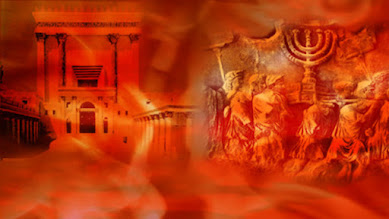Among the most extraordinary gifts bestowed upon the
human being is the power of dibbur—speech. Not merely the ability to
communicate, as animals do through sounds and signals, but the unique human
capacity to use language to create, to bind, and to transform reality.
Rabbi Paul Bloom explains.
In Parashat Mattot, the Torah unveils one of the
deepest expressions of this power: the laws of nedarim (vows)
and shevuot (oaths). Through speech, people can obligate
themselves, restrict themselves, or take on commitments that become sacred. The
Torah’s message is unequivocal: words are not just words. Words are creative
forces. They are acts of covenant.
The Covenant of Words
Judaism is a covenantal religion at its core. Our national
relationship with Hashem was forged not in a battlefield or a marketplace, but
at Har Sinai through a brit, a covenant—a mutual declaration of
loyalty, responsibility, and destiny expressed through speech. As the Torah
records:
"וַיֹּאמֶר
יְהוָה אֶל־מֹשֶׁה... כֹּה תֹאמַר אֶל־בְּנֵי יִשְׂרָאֵל..."
"And Hashem said to
Moshe... thus shall you say to the Children of Israel..." (Shemot
19:3)
This exchange of words—Na’aseh venishma, “We will do
and we will listen”—was the founding act of our national existence. In this
moment, we became a people not merely through bloodline or geography, but
through the binding force of language and commitment.
The Gemara in Nedarim teaches that if
someone swears not to perform a mitzvah—say, not to wear tefillin or
sit in a sukkah—the oath is invalid. Why? Because we are
already under oath, having taken a collective shevuah at
Sinai to keep the Torah. A later oath cannot uproot an earlier one. The shevuah of
Sinai binds us all, forever.
Speech and the Tzelem Elokim
This ability to create reality through speech is an
expression of the Tzelem Elokim, the divine image, within us.
Hashem created the world through speech: "Vayomer Elokim—Yehi
or," “And God said, ‘Let there be light.’” Human beings, created
in His image, wield a similar tool—our words can shape our world. We forge
marriages, form contracts, seal agreements, and found societies—all through
spoken commitments.
No animal, no matter how intelligent, can make a promise.
Communication is not covenant. But when a chatan says under
the chuppah, "Harei at mekudeshet li...", he creates a
new legal and spiritual entity—a bayit ne’eman beYisrael, a Jewish home.
Reality changes with those words.
This is the power the Torah warns us about in Mattot:
if you make a neder or a shevuah, do not take it
lightly. You are exercising the deepest aspect of your humanity—your ability to
partner with Hashem in building a moral and holy society through the sanctity
of speech.
The Request of Reuven and Gad: A Deeper Story
The parashah concludes with a fascinating and complex
narrative. The tribes of Reuven and Gad approach Moshe Rabbeinu with an
astonishing request: to remain on the eastern side of the Jordan River, outside
of the Promised Land proper. After journeying forty years through the desert,
yearning for Eretz Yisrael, how could they suddenly settle for
greener pastures in Transjordan?
At first glance, it seems petty—choosing grazing land for
cattle over the land promised by Hashem. But the Meshech Chochmah and
others suggest a deeper layer.
Reuven and Gad had a unique relationship with Moshe. They
knew he would not be entering Eretz Yisrael. They couldn’t bear to
leave him buried outside the land, abandoned. So they devised a plan: if they
remained in Transjordan, and Moshe gave them that land directly, perhaps they
could confer kedushah upon it. Maybe Moshe, though barred from
crossing the Jordan, could still be buried in holy ground.
Indeed, in Devarim (33:21), Moshe later blesses
Gad for choosing reishit, the beginning of the inheritance. He
understands that they weren’t rejecting Israel—they were embracing him.
The Gemara in Sotah 13b even explains that Moshe
died in Reuven’s territory and was buried in Gad’s, thereby sanctifying the
area.
But how did this arrangement take root? Through words.
Reuven and Gad promised Moshe: “We will cross over before Bnei Yisrael…
until every one of them has taken possession of his inheritance” (Bamidbar
32:17–18). And they kept their word. Their promise—dibbur—granted them a
stake not only in the land, but in the spiritual destiny of the people.
A Legacy of Promise
What emerges from this is a powerful message for all
generations: the Jewish people are built not only on action, but on commitment.
And commitment is expressed through language.
Each neder, each shevuah, each
promise, is a miniature reenactment of Na’aseh venishma. It is a
declaration of trust and responsibility before God and before our fellow human
beings. When we keep our word, we affirm our divine likeness. We create a
society grounded not in force, but in faithfulness.
We are, all of us, bound by the oath of Har Sinai.
That shevuah, etched into our collective soul, obligates us not
only to observe mitzvot, but to speak and act with integrity, to honor our
commitments, and to uphold the sacredness of our words.
In a world that too often treats words as disposable,
Mattot reminds us: words are sacred. And when we live
by them, we live as Hashem intended—creators of holiness in a world hungry for
truth.
"דבר איש אל
רעהו אמת" — "Each person shall speak truth to his fellow" (Zechariah
8:16)
May we live up to the power of our words, and may our speech
be a source of holiness, connection, and covenant.

















